It's important to know exactly how your electricity is generated so you can confidently report your carbon emissions and share your sustainability achievements. As well as the basic fuel mix we're required to report, we publish a detailed fuel mix for each product so you know the breakdown of your supply.
Every megawatt hour we supply to customers on our renewable products is from renewable generation and backed with an origin certificate. The fuel mix for these products from April 2022 to March 2023 is shown below, as well as our residual conventional mix and total overall fuel mix.
We've also included definitions of the renewable generation technologies in our supply so you can understand where your electricity comes from. To find out more about some of the independent generators we purchase power from, visit our case studies section here.
Renewable Natural Product Fuel Mix
Our Renewable Natural product is for businesses that want to embrace the forces of nature - the sun, wind and water - for their power. The fuel mix for Renewable Natural for the reporting period 2022/23 was:
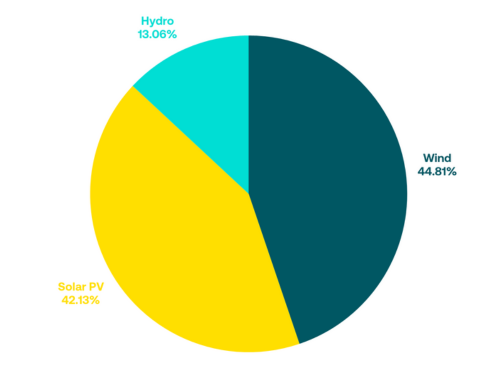
(Wind - 44.81%, Solar PV - 42.13%, Hydro - 13.06%)
Scope 2 emissions: 0 gCO2/kWh
Total radioactive waste: 0 g/kWh
Renewable Standard Product Fuel Mix
Our Renewable Standard supply product provides electricity from a blend of renewable sources and, like all our renewable electricity, is backed by origin certificates. The fuel mix for our Renewable Standard product for the reporting period 2022/23 was:
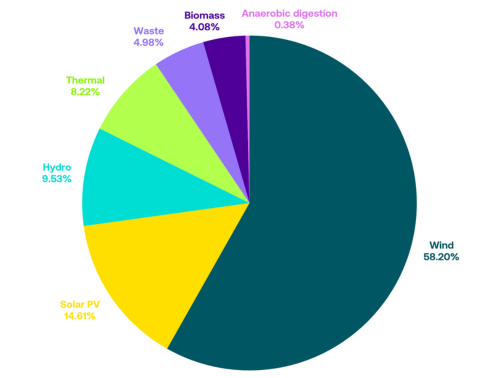
(Wind - 58.20%, Solar PV - 14.61%, Hydro - 9.53%, Thermal - 8.22%, Waste - 4.98%, Biomass - 4.08%, Anaerobic Digestion - 0.38%)
Scope 2 emissions: 0 gCO2/kWh
Total radioactive waste: 0 g/kWh
Renewable Specific Product Fuel Mix
Our Renewable Specific product enables supply customers to specify their bespoke renewable requirements for their generation source. The fuel mix for our Renewable Specific product for the reporting period 2022/23 was:
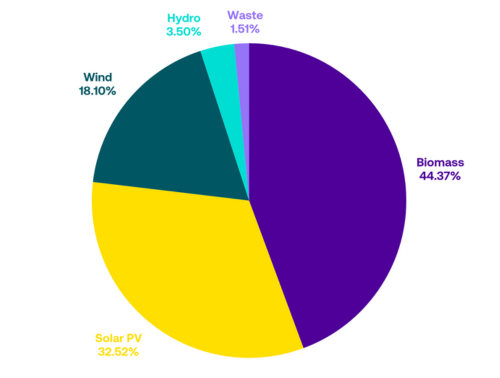
(Biomass - 44.37%, Solar PV - 32.52%, Wind - 18.10%, Hydro - 3.50%, Waste - 1.51%)
Scope 2 emissions: 0 gCO2/kWh
Total radioactive waste: 0 g/kWh
Conventional Fuel Mix
Once we have allocated all our renewable supply across the products above, what remains is the residual fuel mix for our Conventional customers, which is predominantly from grid sources. Our Conventional fuel mix for 2022/23 was:
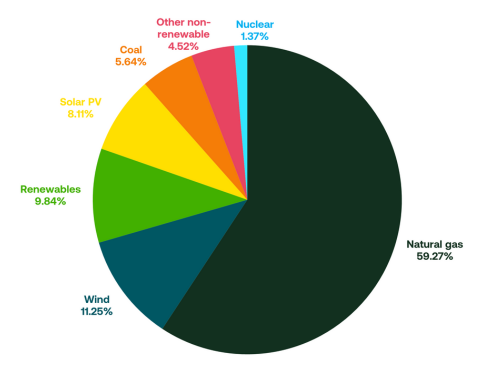
(Natural Gas - 59.27%, Wind - 11.25%, Renewables - 9.84%, Solar PV - 8.11%, Coal - 5.64%, Other non-renewable - 4.52%, Nuclear - 1.37%)
Scope 2 emissions: 309 gCO2/kWh
Total radioactive waste: 0 g/kWh
SmartestEnergy's Total Fuel Mix
The total fuel mix for our overall supply across all products for 2022/23 was:
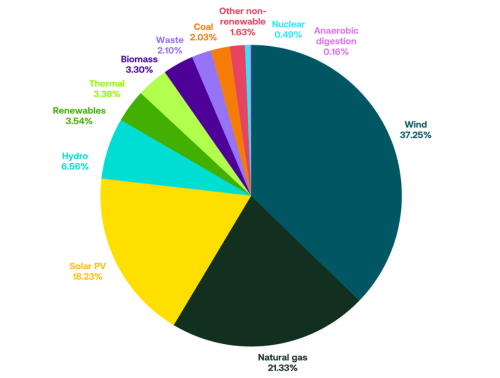
(Wind - 37.25%, Natural gas - 21.33%, Solar PV - 18.23%, Hydro - 6.56%, Renewables - 3.54%, Thermal - 3.38%, Biomass - 3.30%, Waste - 2.10%, Coal - 2.03% Other non-renewables - 1.63%, Nuclear - 0.49%, Anaerobic digestion - 0.16%)
Scope 2 emissions: 111 gCO2/kWh
Total radioactive waste: 1 g/kWh
If you have any questions about our fuel mix or would like to find out more about our renewable products, please get in touch here.
Environmental impact of fuel mixes energy sources
All energy sources have some impact on the environment, but to varying degrees. As the net zero transition and the shift to natural renewable energy sources (wind, hydropower and solar) convey – there’s a need to move away from fossil fuels (e.g. coal, oil and natural gas), which do substantially more harm than renewable sources.
So what are the kinds of environmental impact energy sources can have?
Impacts are far ranging and can include air and water pollution, damage to public health, wildlife and habitat loss, water use, land use, and global warming emissions. The intensity of the impact, as well as the type of impact, depends on the specific technology used, the location of the energy assets , and a number of other factors.
Our generation sources
See below for definitions of the renewable generation technologies included in our supply. Where renewable electricity has been provided, it additionally meets the criteria of Renewable Source Electricity as per the Finance Act 2000.

 United States
United States Australia
Australia





